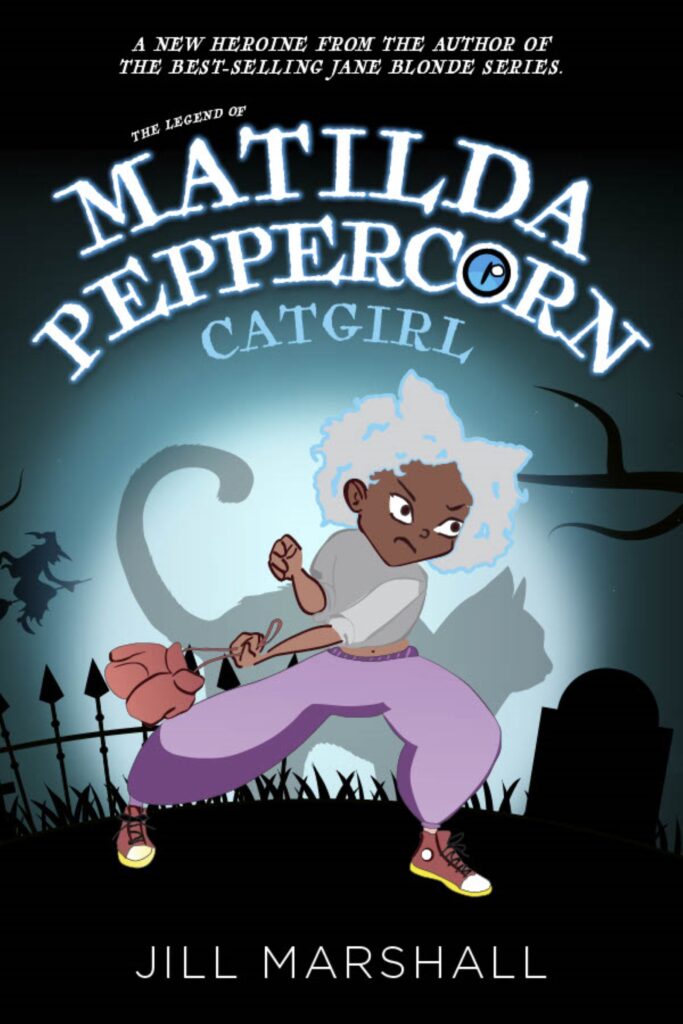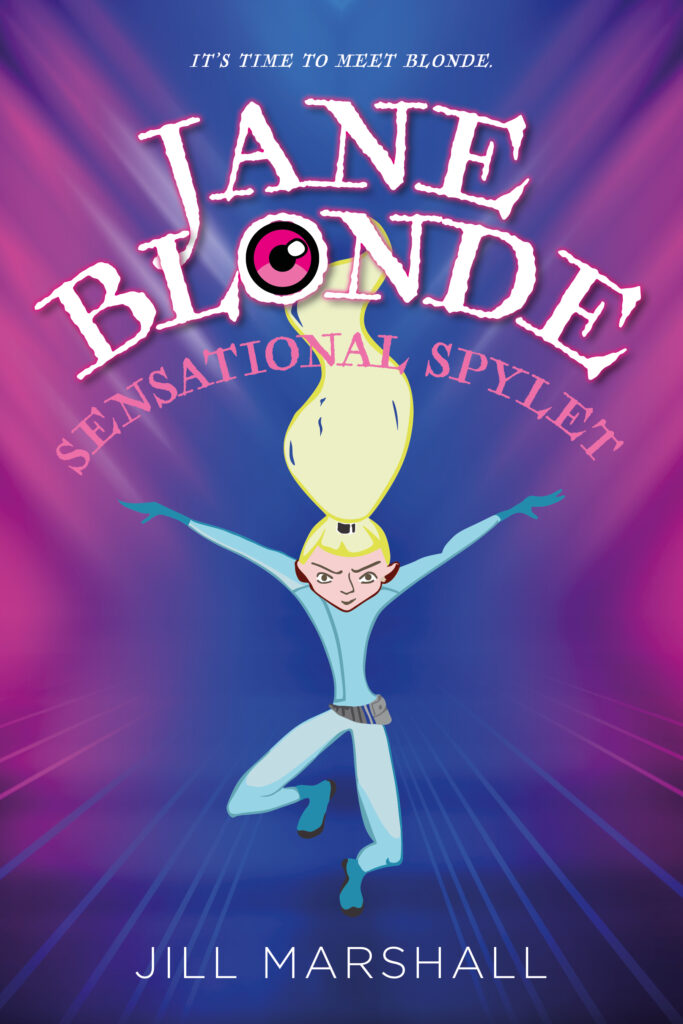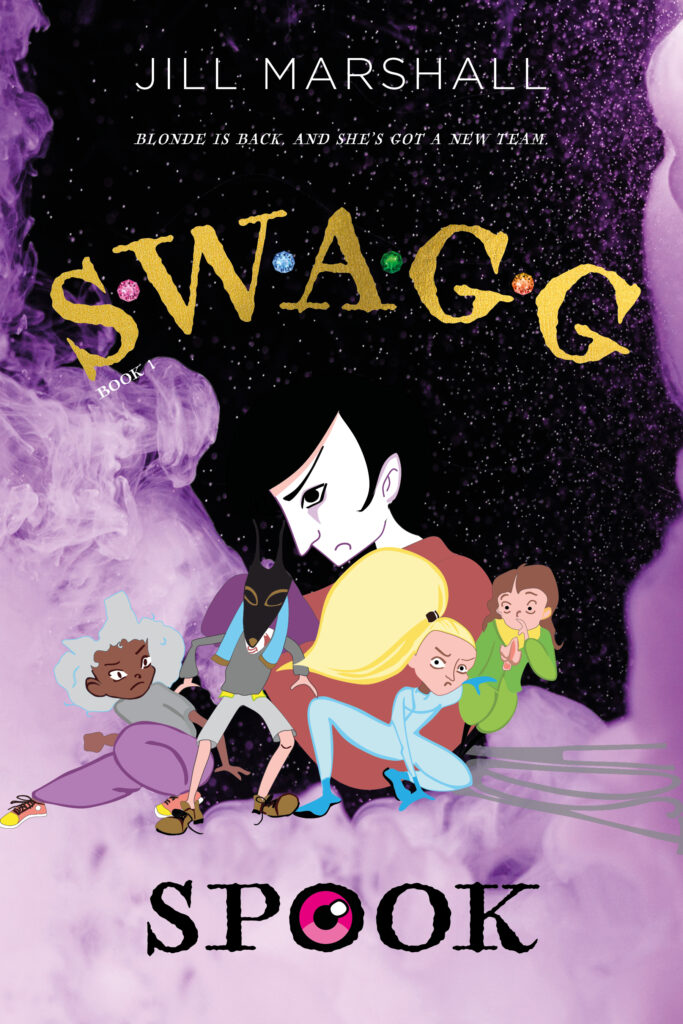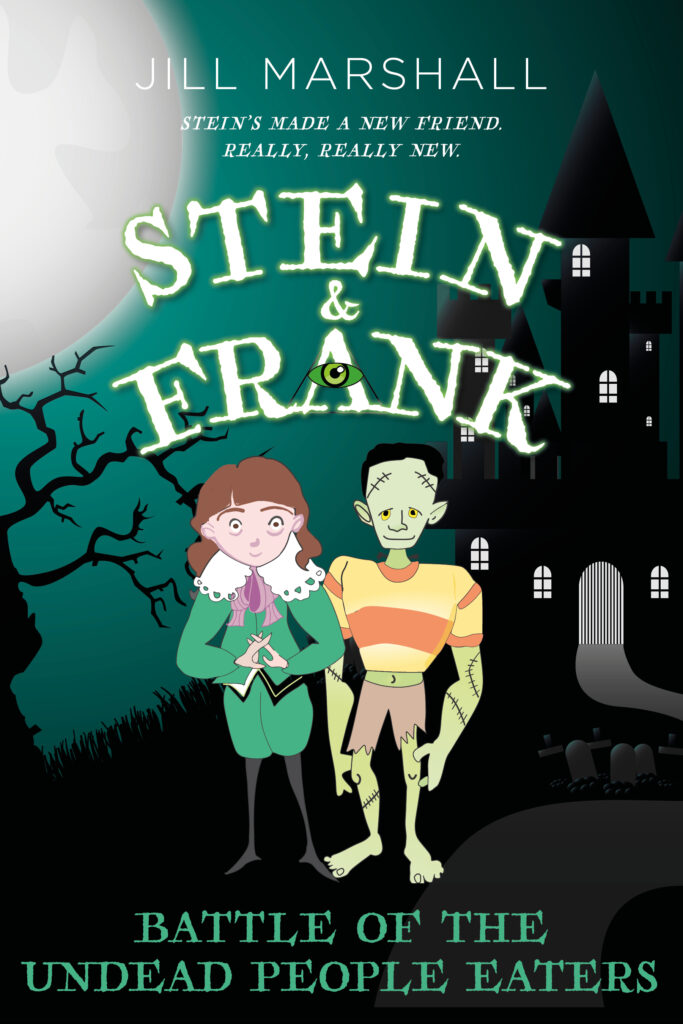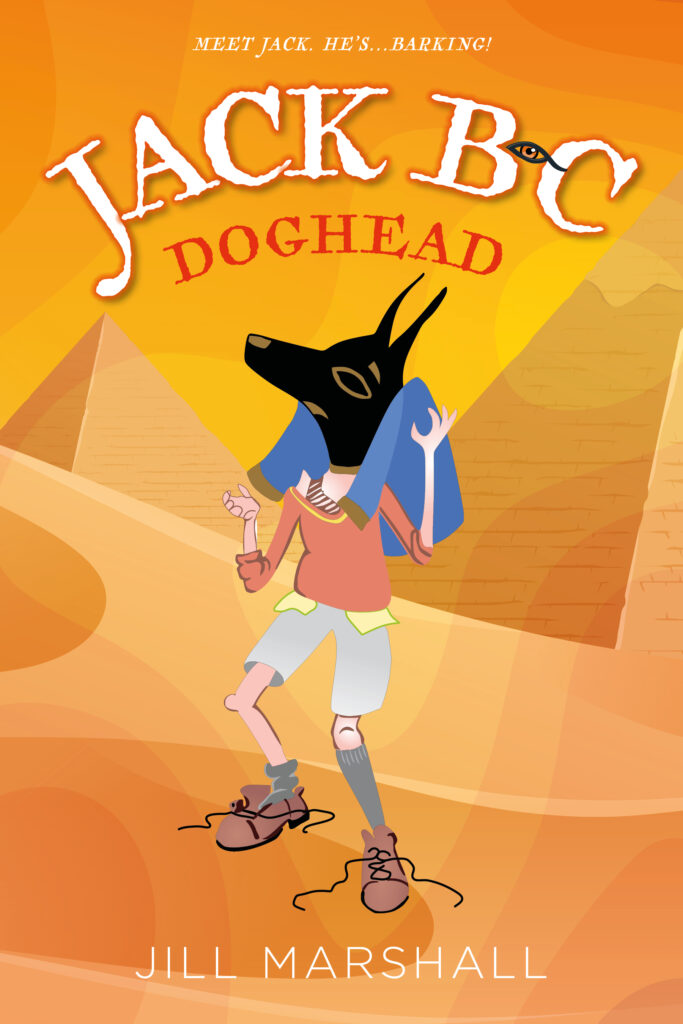Within the past week we had the wonderful opportunity of promoting a massive franchise by a spectacular author. Jill Marshall is wrapping up a 19-book contemporary fantasy universe that you must read to believe, and it has been a wild ride learning about her and her stories. Now, you get to see the great talent behind what your new favorite books. Read on to learn more about Jill Marshall.
Tellest: Hello Jill! First, I’d like to thank you for taking some time to chat with me about your stories! I know that you have a tremendous catalog, and that it must take a lot of work to put everything together as perfectly as you have. With so many characters and story threads set in place, you’re a bit of a writing phenom! Thank you for giving me the opportunity to see what’s going on behind the scenes and learning the ins and outs of your world.
Jill Marshall: Thanks, Tellest! It’s been a labour of love, that’s for sure – not always perfect, maybe, but always from the heart.
T: One of the first things that I always like to learn from my interview subjects early on is how they started down the path of the storyteller. We draw inspirations from a lot of different places, and they can be just as exciting an origin story as the ones we create for our characters. What steered you in that direction? Did you have any relatives or members of the community that inspired you, or did you maybe have a favorite author?
JM: Like many writers, I started on the path to being an author as a reader. I read voraciously from a very early age, supported by a constant supply of books from the local library via my mother! I was the classic kid reading into the small hours with a torch under the blankets, or daydreaming over my windowsill during daylight, and yes, that included at school. The people who inspired me were authors. I read them all, over and over, with particular favourites being character-based series – Anne of Green Gables, the Narnia stories, even some books that were intended for my brother about Roddy the Road Maker! I was also deeply fascinated by a series about a magical cat called Carbonel. It’s very strange to look back now and see how I’ve recreated many of those set-ups in my own way.
As for whether there were relatives or community members in this field – there were most definitely some who should have been! I grew up in a working class suburb of Manchester, UK, where people got a job, got married or both. Even though I wrote my first (short) book at 13, becoming an author was a distant and unlikely dream in my neighbourhood.
T: You mentioned that you’ve recreated a lot of the set-ups of your favorite stories, and in a way, that’s what makes your most popular tales so accessible and approachable. You’ve got characters that take inspiration from James Bond, Frankenstein, ancient Egyptian deities. Who was your favorite character to write, and why?
JM: Ooo, now that’s like asking who’s your favourite child (and the answer to that is definitely my daughter). If pushed, though, I’d say that my favourite to write (although they’re all equally loved!) would be legendary Catgirl, Matilda Peppercorn, probably because she has all the courage and crazy wildness that I never dared to have myself! She owns her story and basically writes it herself, so some of the things she’ll say and do surprise even me.
T: That brings up another great writing question that I always like to know the answer to. When you’re writing your stories, do you find yourself telling the story, or more discovering it? In a lot of ways, I feel like it’s the difference between speaking something into existence versus being out in the desert, unearthing a fossil with a toothbrush.
JM: Yes, a big writerly question – and I’d have to say that it’s changed over the years. I ran on pure inspiration for my first couple of books, but when they came back with a fair bit of editing to do, I changed tack! I then began planning a lot more, to the extent that I’d always know the full plot-line and where each chapter was going within that overall structure. I’ve got notebook after notebook filled with scribbled outlines and chapter synopses (I do all my planning with pen and paper, but then from the moment I start writing, it’s on a computer). I’ve always allowed it to change direction if the characters demand it, but I’d generally follow that plan through to the end.
This method sustained me for many books, but when I started writing the first S*W*A*G*G title, Spook, I really sat back and allowed the stories to breathe themselves into life. I trusted both the technical process of structured writing, and the unconscious guidance that comes from who knows where, to take me on a journey with my S*W*A*G*G team, with many a surprise along the way. With so many synchronicities that I couldn’t begin to explain, I genuinely felt I was co-writing these stories with some great unknown.
T: You’ve managed to stitch together this beautiful tapestry of stories that connect a handful of different characters. Once upon a time, they played well enough on their own, but now they’ve banded together and going on cooperative adventures. Was that always the plan, or did that end up surprising you as much as it did your readers?
JM: It really did surprise me as much as my readers, and has continued to throw in little Easter eggs and shock revelations to the very end, almost the last few words.
In fact, when I wrote the first Jane Blonde book, quite a few years ago, I thought I was writing a one-off adventure. Then my publishers at the time (Macmillan Children’s Books in UK) asked for a second spygirl mission, and then another, until it became a seven-book series – or rather, a 007-book series. Meanwhile I’d started writing about Jack Bootle-Cadogan, in a trio of Egyptology-steeped adventures about a young lord who becomes Anubis because of a family curse. Jane Blonde finished, and Macmillan asked for a second girl series, and so Matilda Peppercorn, Catgirl and legend, was born. Around the same time, I began to write about Stein and his new best friend, Frank.
They were all distinct adventures, although I did notice that the characters would pop up in each other’s stories. There’s a tiny hint of Jack B-C showing up in an Egyptian location in the third Matilda Peppercorn title, for instance. Then one day I went to the movies (I love films of all kinds!) and saw a cardboard cutout of a team of superheroes known as The Avengers. For a very long time, I stood in front of that cutout, staring and holding up the queue from the escalator, and it occurred to me that my own slightly smaller superheroes could come together in the same way. I’d always wanted to revisit Jane Blonde, and when the stories for S*W*A*G*G started to appear in the back of my brain, I suddenly knew why. It was a bit like the move to high school for my characters – the dynamics and electricity were all more super-charged, and their skills became irrevocably linked with their personalities. Somehow, they belonged together, and it felt like the path had been flowing in that direction for a very long time. It just took a pandemic to make me pull it all together!
T: I love it. I didn’t want to make the connection myself there, because it almost felt like you were heading in that direction on your own anyway, but you’re right, there are similarities that pop out at you. How excited were your fans to see those connections take shape?
JM: Most of my uber-fans are Jane Blonde readers, who were sad that the JB series had come to an end in the first place – so to see that she (and her much-loved godmother, G-Mamma) were back in action made them very happy indeed! To other readers, well, it just made sense. My books are and always have been very filmic – I love a good fight scene and some wild action – so that Avengers vision was an exact fit. I had the ‘origin’ series mostly written already and a very, very strong sense of what they’d be like if they met. One fan asked me if Jane Blonde and Matilda Peppercorn would actually get along, which was very insightful for an eleven-year-old! But it was really, to me, as if they were all destined to meet and continue to grow on this next step of their journey.
T: When it comes to marketing your stories, do you find yourself focusing on the children who you intend to read the books, or do you pitch to their parents—the ones who will ultimately end up pulling out their wallets to make the purchase?
JM: As with my allowing-planning-allowing writing style, this has changed over the years too. For many years, I was lucky enough to have the massive marketing machinery of multi-national trade publishers to lean on, and basically just showed up to the events! When it became my turn to manage it more personally, I did what I was advised to do and marketed to the parents with the purchasing power. Since the pandemic and even before, however, I’ve become quite sickened by the amount of online marketing shoved down our throats on a minute-by-minute basis. Knowing how to market seems to be more important than having decent books in your repertoire. And while I know how to do it, I just don’t want to any more.
In any case, my readers aren’t really on all the social media platforms commonly used to ‘sell’ through – and I want to reach the readers. I especially want to reach readers who’ll find themselves or a means to understand life, or discover a way to escape it for a while in some fun, fantastical adventure. I want to build a genuinely safe SWAGG community where readers can connect with me and the characters. To do all that … well, I’m back to allowing it to happen again. I do some advertising because that targets people who are already looking for books like mine. I treasure my readers and let them spread the word themselves, if they like the books. There has never been anything more rewarding to me than a fan writing to let me know that they loved one of my books, and it helped them a little. I’d rather have a hundred readers like that than a thousand who are blah about it because some mis-matched algorithm waved it in their face.
This also applies to my book pricing, incidentally. All 19 S*W*A*G*G titles are available in ebook for all e-readers and paperback. The four S*W*A*G*G books are also available in hardback, and I’m going to make sure the whole set is available in hardback soon … and maybe audio. Every title is printed off individually to order, so if a fan orders the whole set in a bookstore, it’s printed off just for them. Not only is this good for COVID reasons, but it’s also much better for the environment. I’ve been in publishing a fair old while, and it still shocks me that mountains of unsold, mass-produced paperbacks often get shredded and pulped. My books may be more expensive, but I’d rather people grabbed their story in an electronic form, or spent a little more on a just-in-time printed book that is better for them and the planet. Even better if it’s a collectable hardback that will last a lifetime!
So an interesting question that has many answers, but really boils down to one response. I don’t really care about marketing! I do what I can to make it as gentle and unintrusive a process as possible. My readers will just find me, in some magical way that works for them. If you build it, they will come.
T: Because you have so many characters, and so many stories, there’s a lot of different places that you can enter the Marshall-verse. What would be your suggestion for where readers should begin?
JM: Marshall-verse. I like that! Yep, the S*W*A*G*G franchise-like collection is made up of one SWAGGey ensemble series where we meet mysterious team leader, Gideon Flynn, and four origin stories starting with Jane Blonde, then Jack B-C, Catgirl Matilda Peppercorn and Stein of Stein and Frank.
Readers who are completely new to my books could start with S*W*A*G*G 1: Spook, and then either carry on with the SWAGG series or deep-dive into their favourite character. Each of the S*W*A*G*G books is told by a different team member (S*W*A*G*G 1 by Jane Blonde, 2 by Jack B-C, 3 by Matilda Peppercorn and 4 by Stein) so each one is almost an epilogue to their origin series, while also being the next instalment in the team adventures. You can see the 19-book trail on swaggbooks.com for really big readers who want to go from Book 1, Jane Blonde Sensational Spylet, to Book 19, S*W*A*G*G 4: Soulforce!
Alternatively, you could enjoy finding out all about your favourite character and how they got to be in S*W*A*G*G by following their series. And if they’re not sure which might be the favourite character, readers can take the S*W*A*G*G personality test (also on swaggbooks.com) to find out which character is most like them and read their series first.
T: With as much as you had written before S*W*A*G*G, and with the threads all coming together, was it easy to act as the storytelling seamstress and carefully stitching everything together, or were there some challenges in handling all the information the right way?
JM: It was relatively easy in some respects, as I know the characters so well and they could direct themselves. Unconsciously, I’d even held some things back in the origin series so they could be answered in the ensemble series. I don’t recommend this for writers, by the way! I’d normally advise them to put it all out there on the page. However, while all the origin series are complete, it meant I had almost-invisible silver threads to pull on that wove into the plotlines and connections for S*W*A*G*G in a way I couldn’t consciously have imagined.
Naturally, there were some hiccups too! Some of the original books were written quite a while ago, so I didn’t remember all the details and had to go back over them to check. In addition to that, I know my characters mostly by how they feel, so I don’t always take too much notice of what they’re wearing, how their hair is that day and so on. I realised part way through Spook that I’d changed someone’s hair colour – had to go back and do a bit of fixing on that one!
T: Perhaps you’d just found someone’s evil twin in the writing instead! On a more serious note, moving across so many books, and jumping around in the timeline from the origin stories to the collaborative series, I imagine there may have been some challenges in keeping everything tidy. What advice would you recommend for writers who similarly are working on this sort of persistent fantasy worldbuilding that sees all this connective tissue?
JM: I think there is definitely some evil twinning going on here and there! As for how to keep it tidy – well, I would first of all confess that I didn’t know as I was writing the characters’ series that there would one day be a collaborative series, so it wasn’t a conscious tidying. I’ve always just been driven to finish the story, even when there was no longer a publisher or a guaranteed readership involved. But in that, I am extremely driven, dedicated an organised. I wrote some Jane and Jack at the same time, as mentioned, but usually I focus on one character and I write until the story’s complete. Then I complete the next. I didn’t start S*W*A*G*G until all the loose ends were tied up, character-by-character, so that I knew exactly what background elements I could pull forward and reference again.
The biggest challenge has probably been writing the S*W*A*G*G titles without giving away too many massive spoilers for the origin series, on the one hand, while not being too mysterious about back-story on the other. I wanted to make sure each series could be enjoyed separately or together. Time will tell the degree to which I managed to pull that off! What was very intriguing to me, though, was the structure of the overall series compared with the structure of an individual book. Every one of my novels (and many other people’s!) follow a certain filmic plot structure of three major peaks of activity, speeding up towards a climactic finale. I literally map it out on the page with triangles and oblongs when I’m plotting a book. When I mapped out the entire 19-book S*W*A*G*G structure it ended up being exactly the same. Not planned, maybe luck, but very fortuitous.
T: You’ve managed to do what few can dream of and had the rights for your character and your story optioned for film and TV. What was that experience like for you? Were you prepared for such an interesting turn of events, or did it knock your socks off?
JM: Yep, they’re the kind of conversations you dream of as a writer and it leads to a lot of pinching of arms when you’re having them. It happened very early for me, when a Hollywood producer and screenwriter showed up at my very first book launch for Jane Blonde, Sensational Spylet! He’s since become a very dear friend, still in LA but not in the movie industry any longer. I had other, similar conversations about Jane Blonde and other of my books with incredible people in the industry, and yes, I’ve had options for film and TV. Of course, only a small percentage of optioned books actually get made, so my lovely peeps aren’t on screen yet … but with the huge increase in streaming platforms and so on, I’m very hopeful that the moment will come soon.
T: We discussed the connection or similarities between your heroes and the Avengers, which invites another question of sorts. Could you see your characters moving mediums besides TV or Film, like comics or graphic novels?
JM: Yes and yes! I love what Neil Gaiman does with his graphic novels, and my books clearly have a comic-verse feel to them. There’s another reason for wanting to do that, however. My books are quite wordy – they’re really intended for big readers with even bigger imaginations – but I think readers who are more visual would still love the action and characters. I’ve been asked a few times, often by school librarians, to convert some of my books to graphic novels for this purpose. Haven’t got round to that yet! But maybe it’s next on the list.
T: Your books are a little bit magic, a little bit superhero, and a little bit secret agent (with dashes of other bits of awesomeness spread about as well). After all the books you’ve written, what’s your favorite subgenre to work in?
JM: I think I would call the S*W*A*G*G books magical mystery, combined with action adventure. The spy gadgets in Jane Blonde are techy but a little magical, while the more overt magical stylings of Catgirl, Stein and Jack B-C are all wrapped up in a mystery that needs to be solved. They fit quite well into the detective subgenre, and often have a bit of actual history or science thrown in, disguised as magic!
Each individual book, each series, and the entire collection as an end-to-end story is also a classic hero’s quest with epic battles and death-defying action. So yes, they’re sprinkled with all sorts of influences, but even my standalone YA novels have a wee hint of magic in in them and a mystery to solve – just with a few less fight scenes.
T: When it comes to action and fight scenes, how do you conceptualize everything? Do you see your characters like cast members in a movie, with everything playing out in front of you? Or do you put yourself in their positions, and sort of shadow fight with make believe foes?
JM: Like many writers, I see the movie version running across the screen of my mind, so usually I’ll write the background – the staging, if you like – from that image. When it comes to my characters’ own part in the action, I am right in their body and acting out every move. In trying to figure out how some action would look and feel, I tend to do a lot of punching the air around my laptop and yes, plenty of shadow fighting. It’s one of the reasons I stopped writing in cafes.
T: Nineteen books in, Soulforce is indicated as the final installment in your widespread and much-loved franchise. Is it difficult to know that you’re coming to an end of something so sprawling, deep, and rich? Is it a definitive stop, or is it something that has a chance at appearing again at some point down the line?
JM: I feel a little sad saying it, but yes, S*W*A*G*G is complete. Through 19 books, I’ve been driven to finish the story. I didn’t know exactly what that ending would look like, but I knew it when I got there – like reaching the summit of a mountain you’ve climbed with five dear friends, and knowing that, now you’ve achieved what you set out to do, you will love them forever but see them less. There’s only one Stein book at this stage, so I could see that being revisited at some point, but probably more as a script. Besides that, though, I’m very aware that this may be the end of the book-writing phase, but the beginning of something else, something different. They’re all grown up now. I can’t wait to see what they do next.
T: With S.W.A.G.G. coming to an end, do you have any other projects you’re looking to tackle? Or are you going to take a much-deserved rest for a while and let everything sort itself out for a time?
JM: I decided to pull all 19 books together and launch S*W*A*G*G in March 2020 when COVID struck, to entertain children stuck at home, so it’s been a very busy couple of years during a very challenging time for the world. I might go for the rest option, at least for a while! However, I’ve written consistently for so many years that I know I’ll never stop, no matter what I might claim. I’m already toying with a couple of script ideas and I believe I may, at some point, have a PhD in me. For now, though, I’m happy to send the S*W*A*G*G team off into the universe to see where they may travel and whose hearts they might touch.
T: We’ve come to the end, in some ways, but let’s circle back to the beginning. What was it that set you off on your writing journey? How did you end up getting Jane Blonde in your head, and what pushed you into developing a story around her?
JM: Very astute question, particularly as I discovered that the whole ‘franchise’ begins and ends with Jane Blonde. Jane Blonde appeared in my mind when my daughter (my actual favourite child!) was very small and very blonde. I would call her Blondie and Blonde Girl, which reminded me of Bond. I thought then that one day I would write about a girl called Blonde, whose first name would be Jane because it’s the most like James, who would obviously have to be a spy but with a soft, sweet alter-ego (Janey Brown). That notion sat around for a couple of years before I took a Masters’ degree in creative writing for children and gave myself permission to write. I wrote the first JB title, Sensational Spylet, after several other books and some months… and then several years later I finally and fully completed Janey/Jane’s story. Probably a good job that I didn’t know at the time that it would take 19 books to tie up every strand! I’m so happy to have followed all those impulses and let myself be guided by the quietly logical, puzzle-solving, heart-centred magnificence of someone very wise indeed – Jane Blonde herself.
T: So, your daughter was the inspiration for the story in some ways. That’s got to be a wonderful bit of flattery and such a lovely notion. Was she the intended audience when you had written it? After all this time and all these books, how does she feel about this massive universe that you’ve built around your catching and captivating characters?
JM: My daughter’s hair was certainly the inspiration for Jane Blonde, and many people have assumed she is Jane herself! That’s not actually the case and she’s never been the intended audience – she was much too young to be Jane when I started writing the books, though in a way their ages ran in parallel due to the slow nature of publishing. She did personally inspire one of my books – a picture book about cavegirl Kave-Tina Rox which we sort of co-wrote, but though she’s grown up with my books and writing, it was just my job in the same way as if I’d been a lawyer or an accountant! Now that it’s a ‘universe’, it’s much more up her street because my daughter is brilliant in the field of film and visual storytelling. She is and has been my guide in all of that. We’re working on it together, as adults, in new and fascinating ways, and I’m enjoying that element of it immensely. I hope she is too!
T: Jill, I wanted to thank you again for your time. With as much as you’ve got no doubt running through your head, I can only imagine your is similarly booked up. I appreciate the opportunity to learn more about your lovely cast of characters and hope that so many more people pick up one of your books and fall in love with this tapestry you’ve created. If someone wanted to learn more about you and your books, where could they go?
JM: Thank you, Tellest, for yours. It’s wonderful to chat with a fellow author about the incredible journey of fantasy writing, and your questions have been the most insightful ever!
For anyone wanting to know specifically about S*W*A*G*G™, they can go to www.swaggbooks.com. It’s fun for tweens and teens with quizzes, factoids and downloads, as well as book info, and there’s no nasty marketing to children! There are also SWAGGbooks pages on Instagram and Facebook, both of which are carefully monitored to make sure they’re safe spaces for young people to engage with me and the S*W*A*G*G team.
For more on my other books (I also write for older teens and adults), they can visit www.jillmarshallbooks.com and follow me on FB and Instagram.
And I am always – always – delighted to hear from readers if they want to send me an email (with parents’ permission). I do try to respond to every one of them personally!
Once again, I wanted to give my appreciation to Jill Marshall. This was a lovely interview with a talented storyteller that we here at Tellest hope you enjoyed. As mentioned before, Marshall has a huge backstory of interconnected titles. The most recent one she released closes out the nineteen-book franchise, and we recently promoted that, which you can see here. If you want to head right to the book, you can check out S*W*A*G*G 4: Soulforce on Amazon right now!

